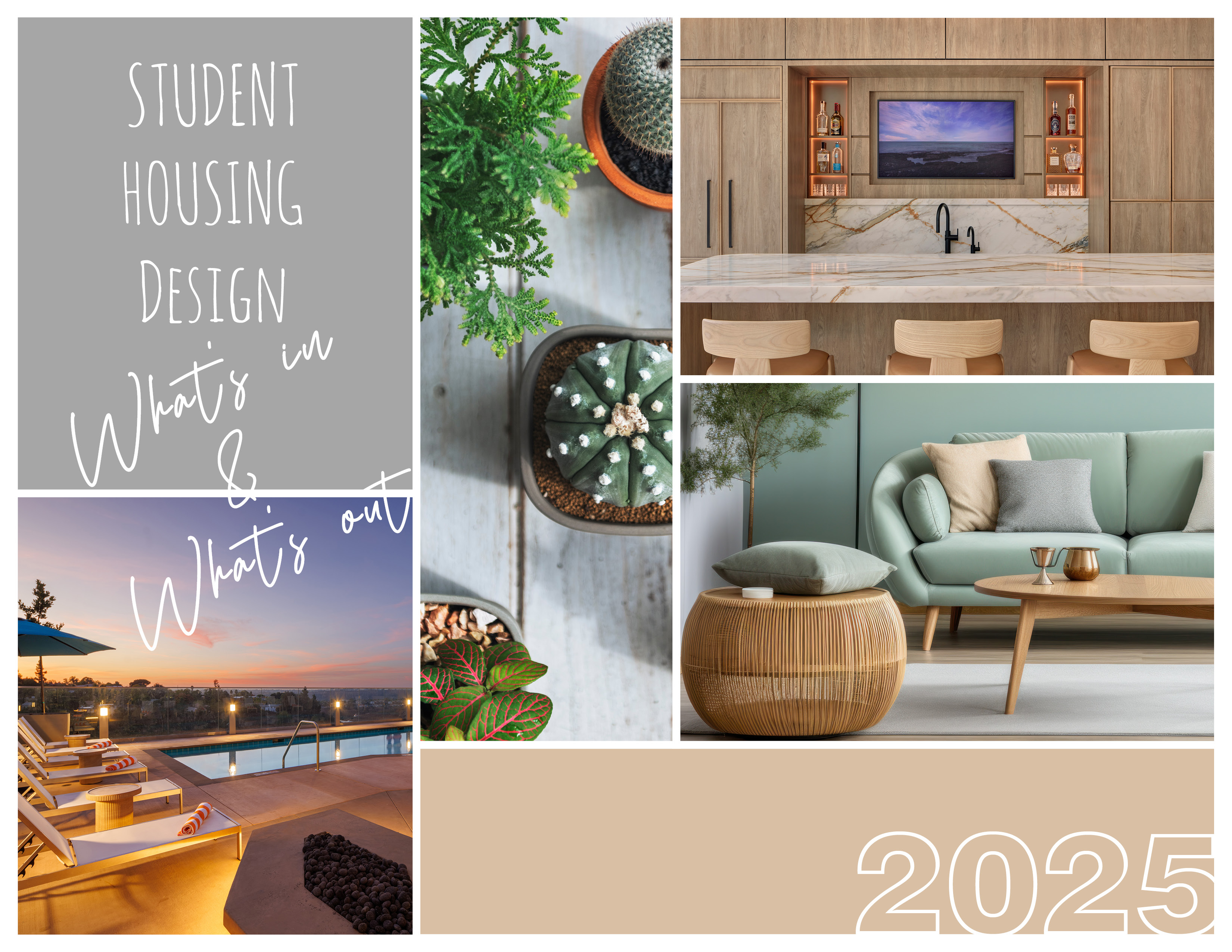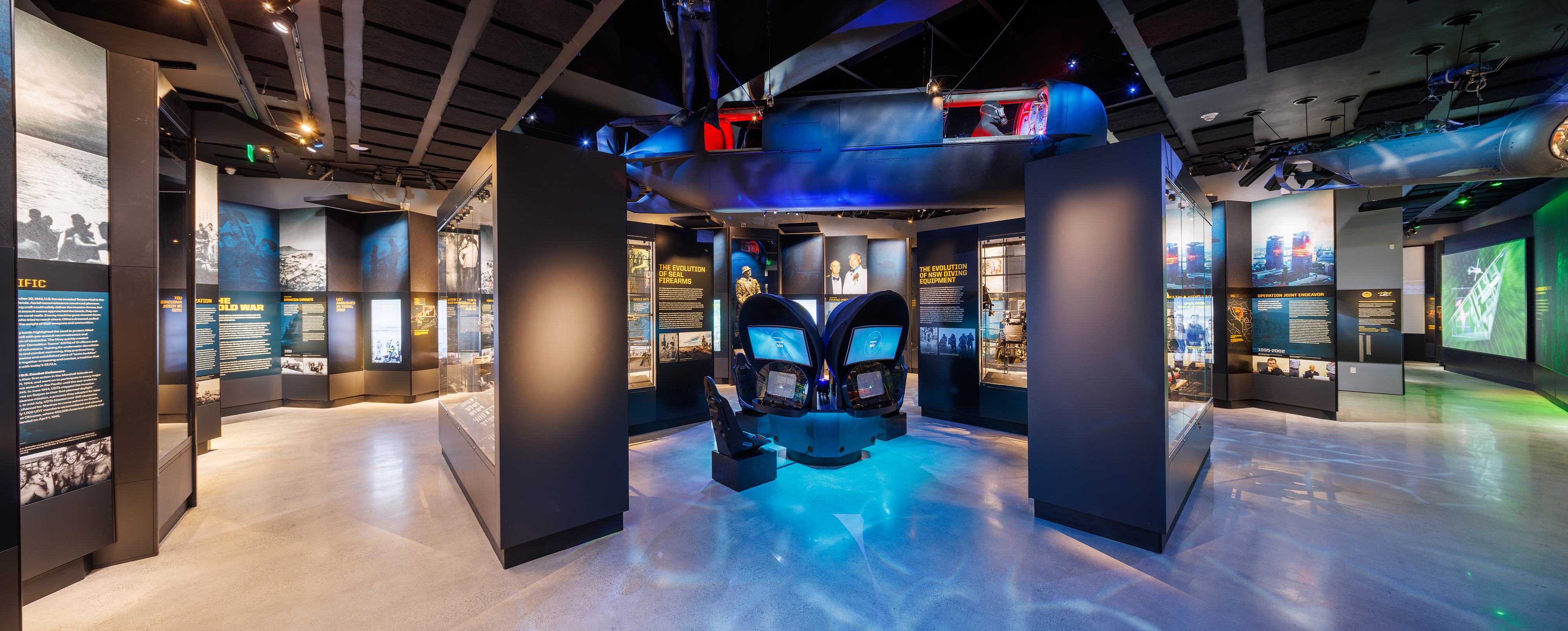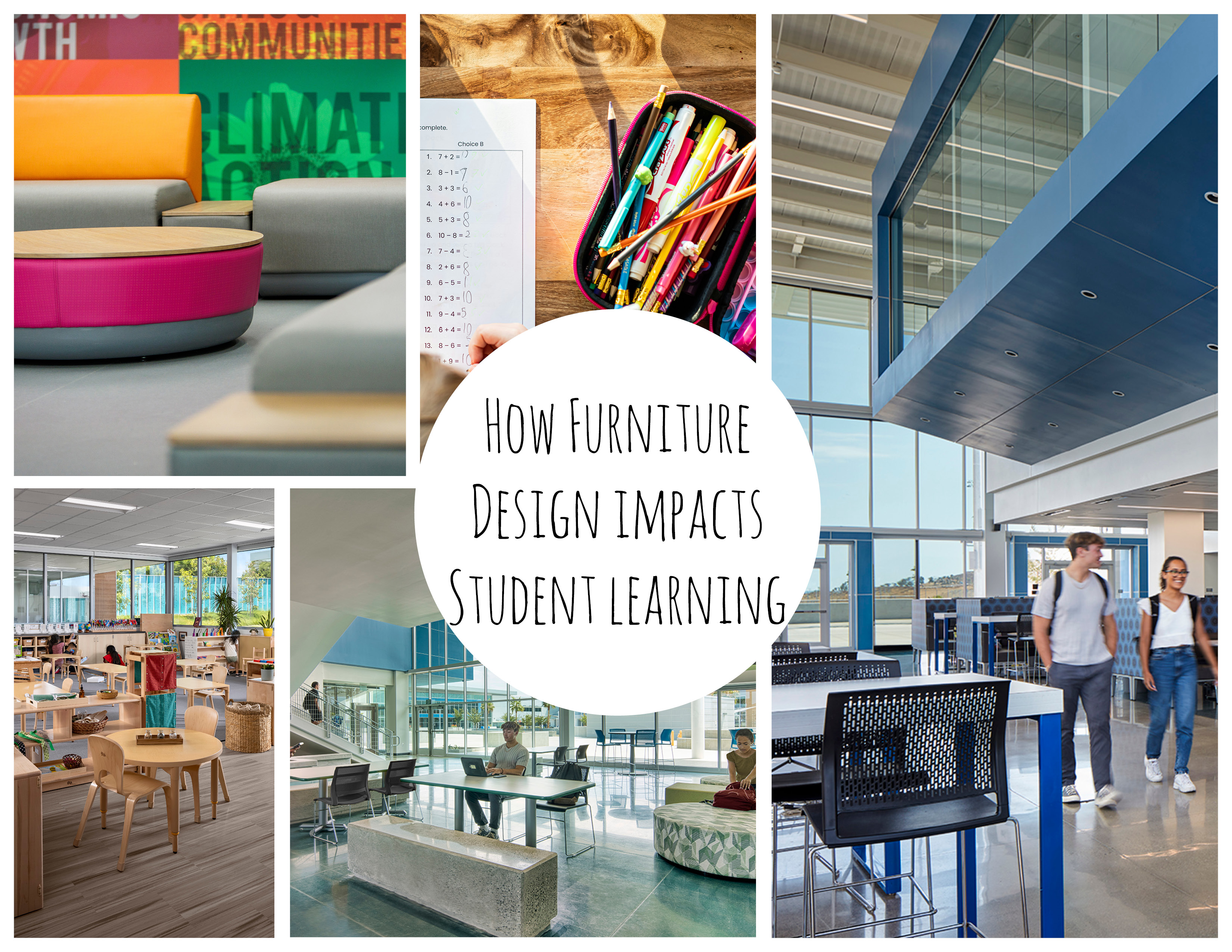By Joleen Hultberg
As we move into 2025, student housing design trends are evolving to reflect the lifestyle and priorities of today’s students. No longer just about affordability and convenience, modern student apartments and residence halls must balance sustainability, technology, flexibility, and wellness, all while creating a welcoming environment that feels like home.
Here’s a look at what’s in and what’s out in student housing interior design for 2025.
What’s In?
1. Sustainable Materials and Eco-Friendly Design
Sustainable student housing is no longer optional, it’s expected. Today’s students care deeply about environmental impact, and they want to live in spaces that reflect those values.
Design Features:
- Recycled Furniture: Reclaimed wood, upcycled materials, and recycled plastics are increasingly being used in student furniture pieces.
- Natural Textiles: Fabrics like organic cotton, linen, and hemp are gaining popularity and offering both comfort and sustainability.
- Low-VOC Paints and Finishes: To ensure air quality and reduce harmful emissions.
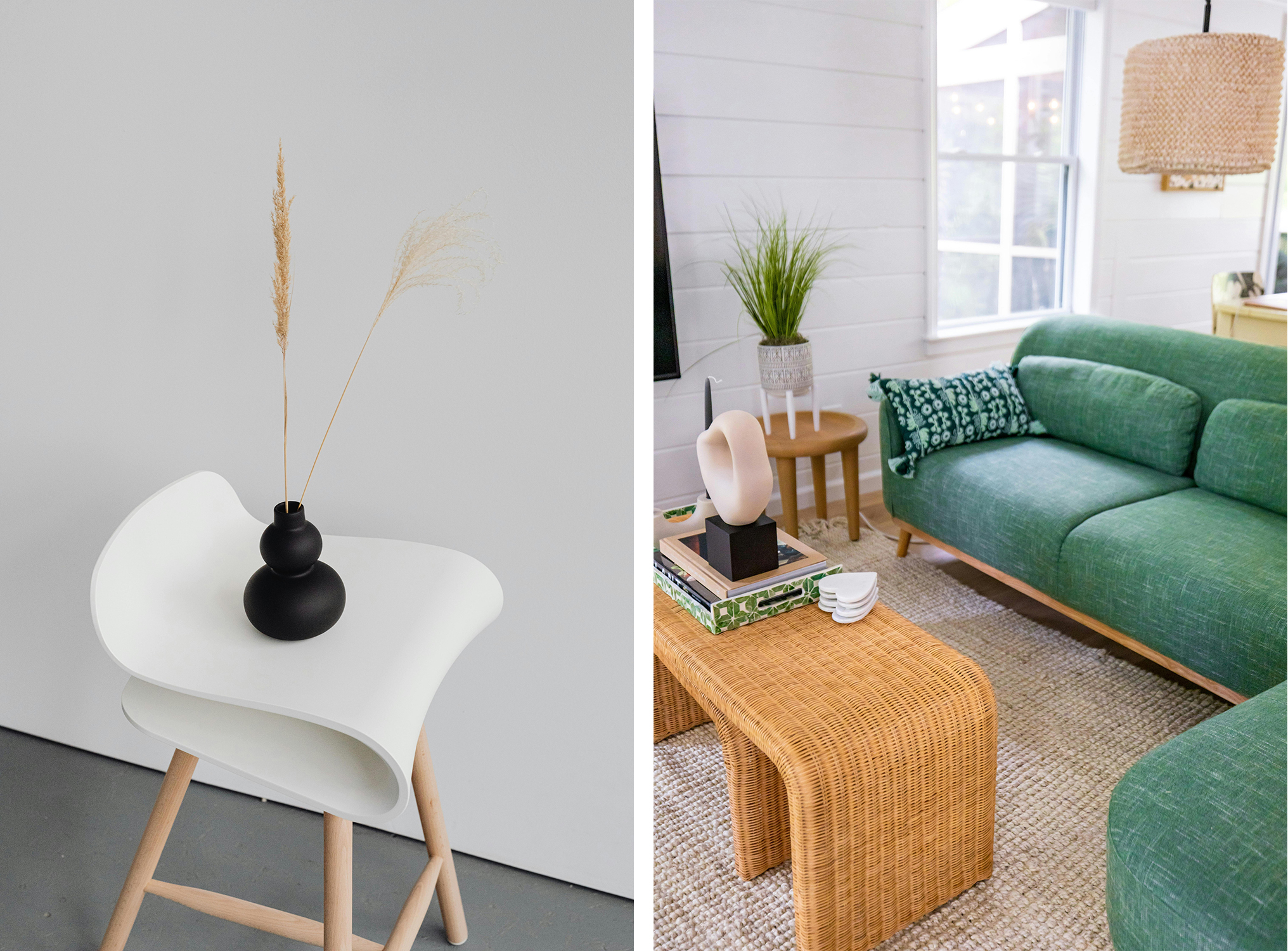
2. Tech-Integrated Furniture and Smart Living
Technology is a cornerstone of student life, from hybrid learning to streaming entertainment. Tech-savvy furniture and smart home features are shaping the way students study, connect, and relax.
Design Features:
- Smart Desks and Chairs: Desks with built-in wireless charging, adjustable heights, and integrated outlets support productivity.
- Smart Lighting Systems: App-controlled, customizable lighting creates the perfect environment for studying, sleeping, or socializing.
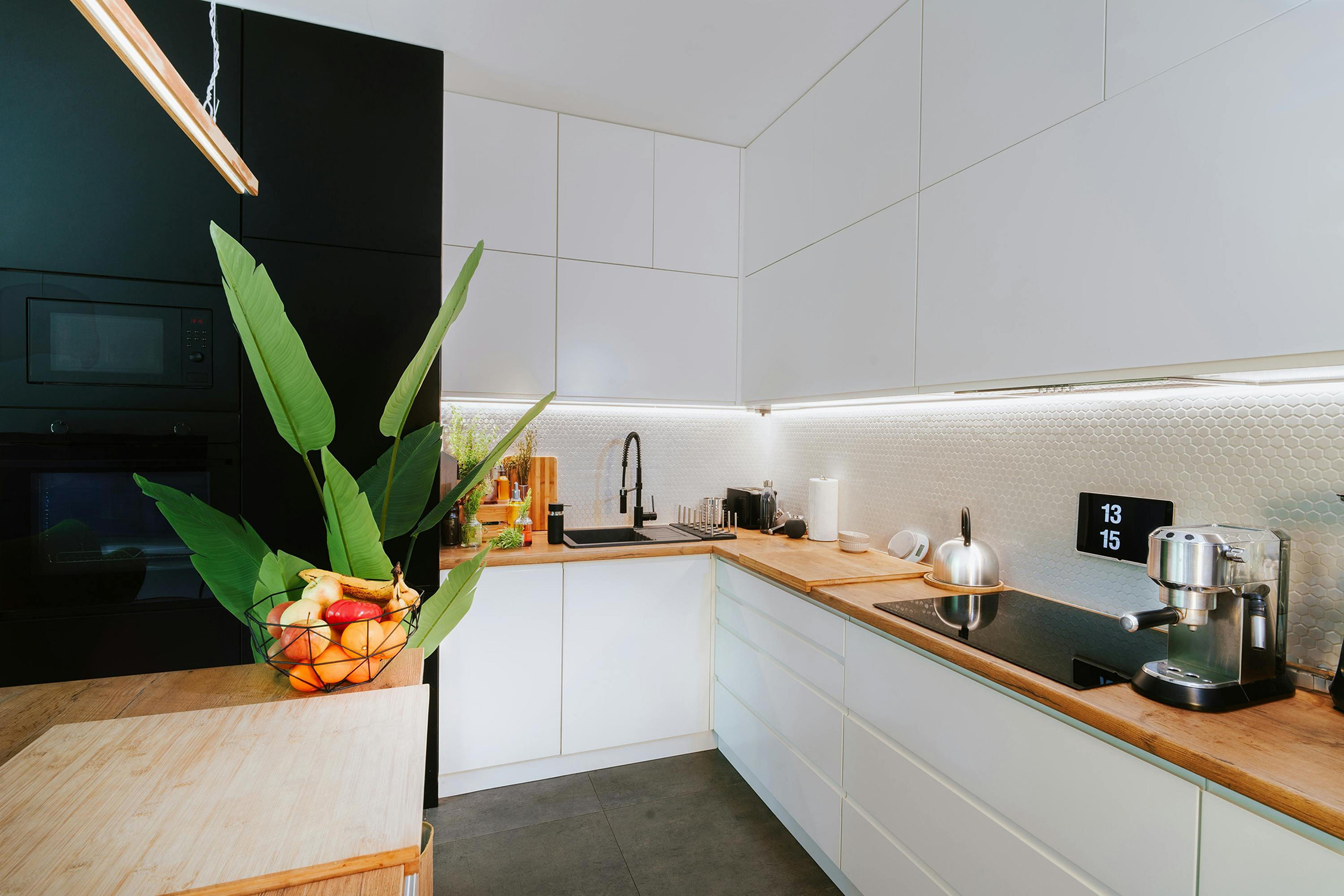
3. Multifunctional Layouts for Small Spaces
Space in student apartments is often limited, making multifunctional design essential. Flexible layouts and convertible furniture maximize functionality without sacrificing comfort or style.
Design Features:
- Foldable and Stackable Pieces: Easy to rearrange for study sessions, group gatherings, or rest.
- Convertible Sofas and Beds: Adapt from lounge seating to sleep or study zones seamlessly.
- Room Dividers: Modular partitions create privacy and designate zones for living, studying, and socializing.
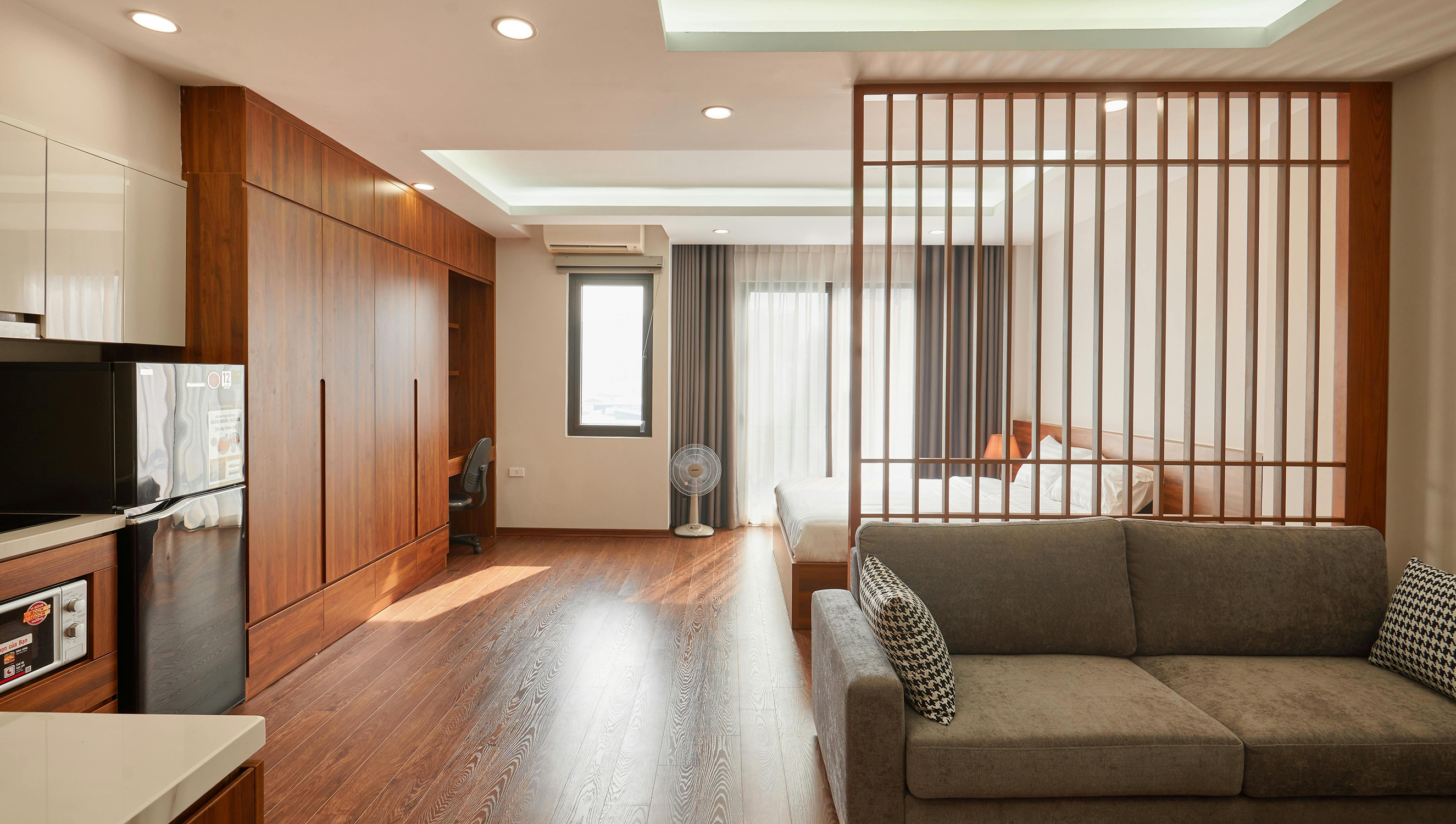
4. Biophilic Design
With growing awareness around mental health in student housing, biophilic design is becoming a must-have. By incorporating natural elements, these spaces foster calm, reduce stress, and improve well-being.
Design Features:
- Indoor Plants: Low-maintenance greenery like snake plants or pothos boosts air quality and adds warmth.
- Natural Light: Maximized with sheer curtains, skylights, and mirrors to create airy, open spaces.
- Wood and Organic Accents: Natural finishes bring warmth and authenticity to interiors.
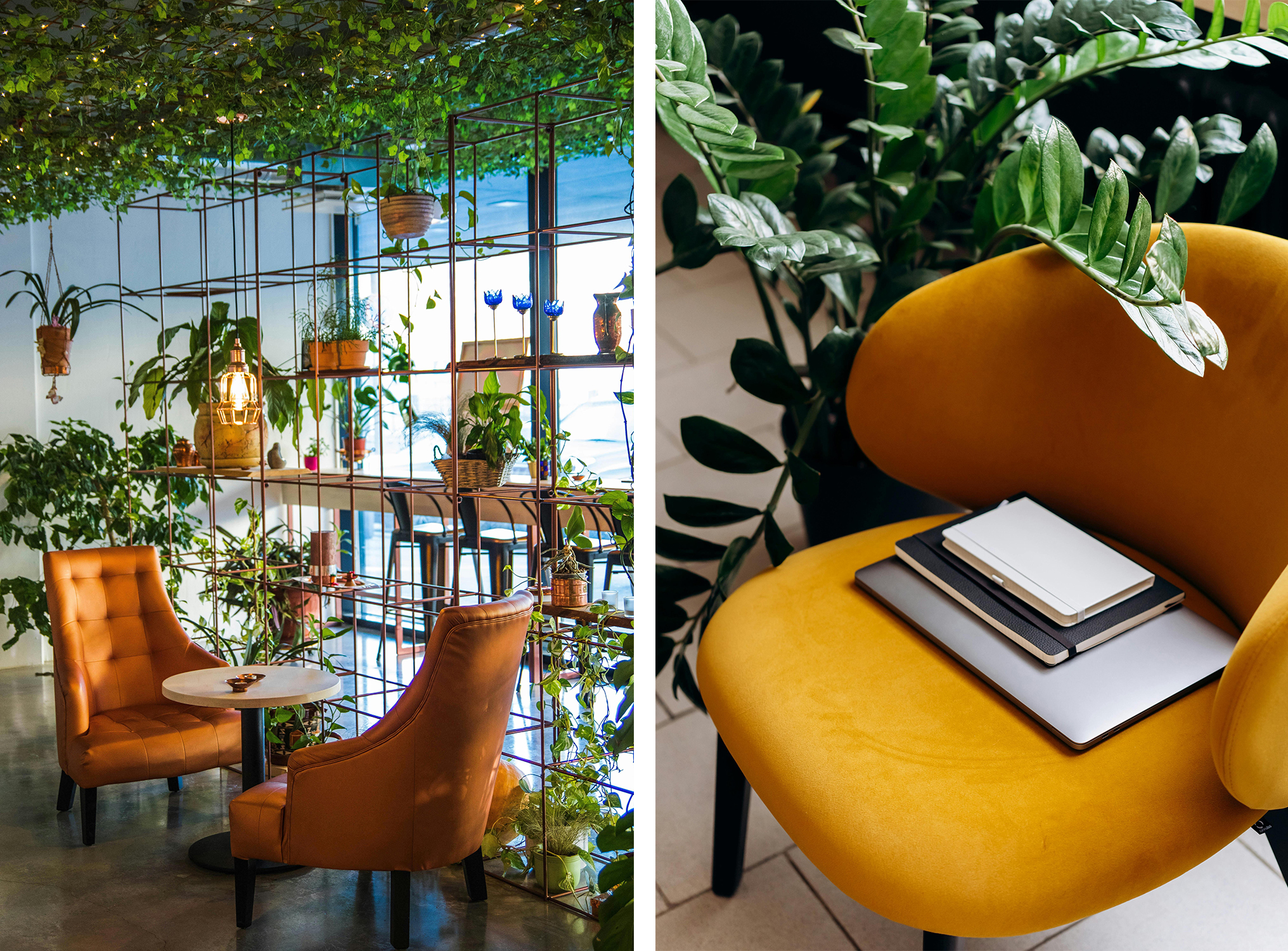
What’s Out?
1. Lack of Outdoor Spaces
Cramped, indoor-only housing is no longer appealing. Students crave access to fresh air and community spaces.
Replacing It:
Rooftop gardens, courtyards, patios, and balconies that support socialization and relaxation while connecting students with nature.

2. Fast Furniture and Disposable Design
Mass-produced, low-quality furniture may be budget-friendly upfront, but it lacks sustainability and longevity.
Replacing It:
Durable, responsibly sourced furniture built to withstand years of student use—think metal or solid wood frames, timeless designs, and long-term value.
3. Isolation of Amenities
Outdated housing models scatter amenities, making it harder for students to connect with one another.
Replacing It:
Centralized, integrated amenity hubs where gyms, kitchens, laundry, and study lounges are clustered to encourage convenience and community building.
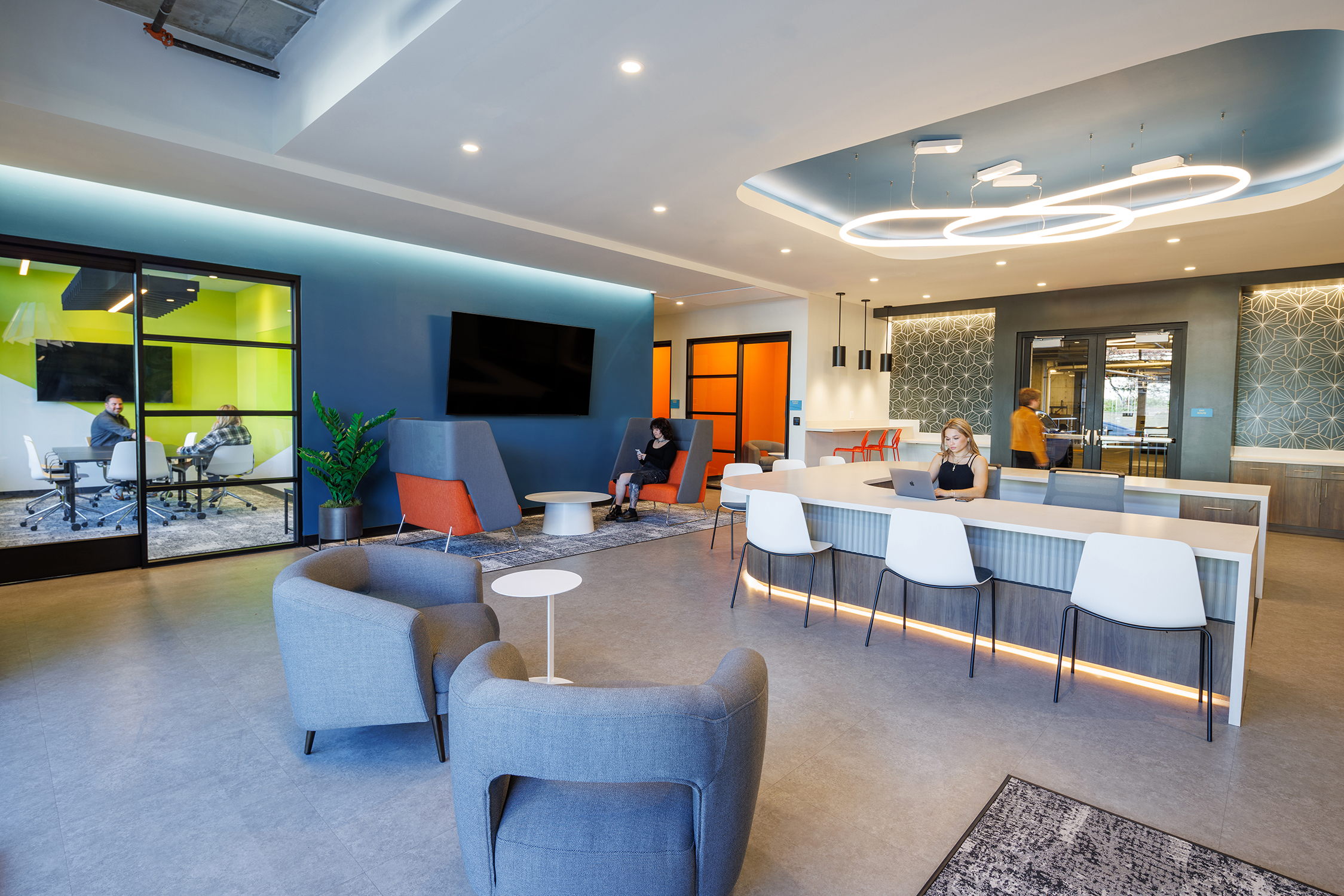
Final Thoughts: The Future of Student Housing Design
The student housing trends of 2025 emphasize sustainability, technology, wellness, and community. By moving away from disposable design and isolated spaces, the next generation of student apartments and residence halls will feel more connected, adaptable, and supportive of student success.
From eco-friendly furniture to biophilic design and tech-integrated living, these design strategies create spaces that are not just places to live, but places to thrive.
